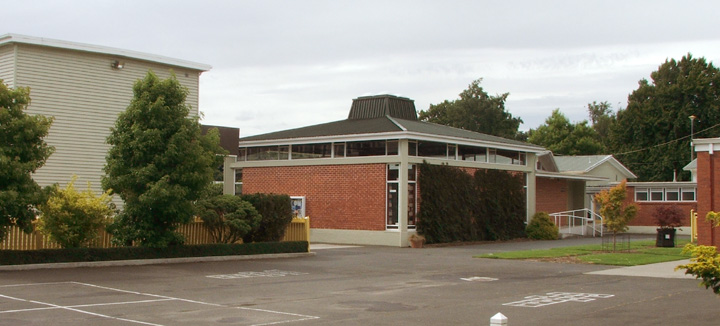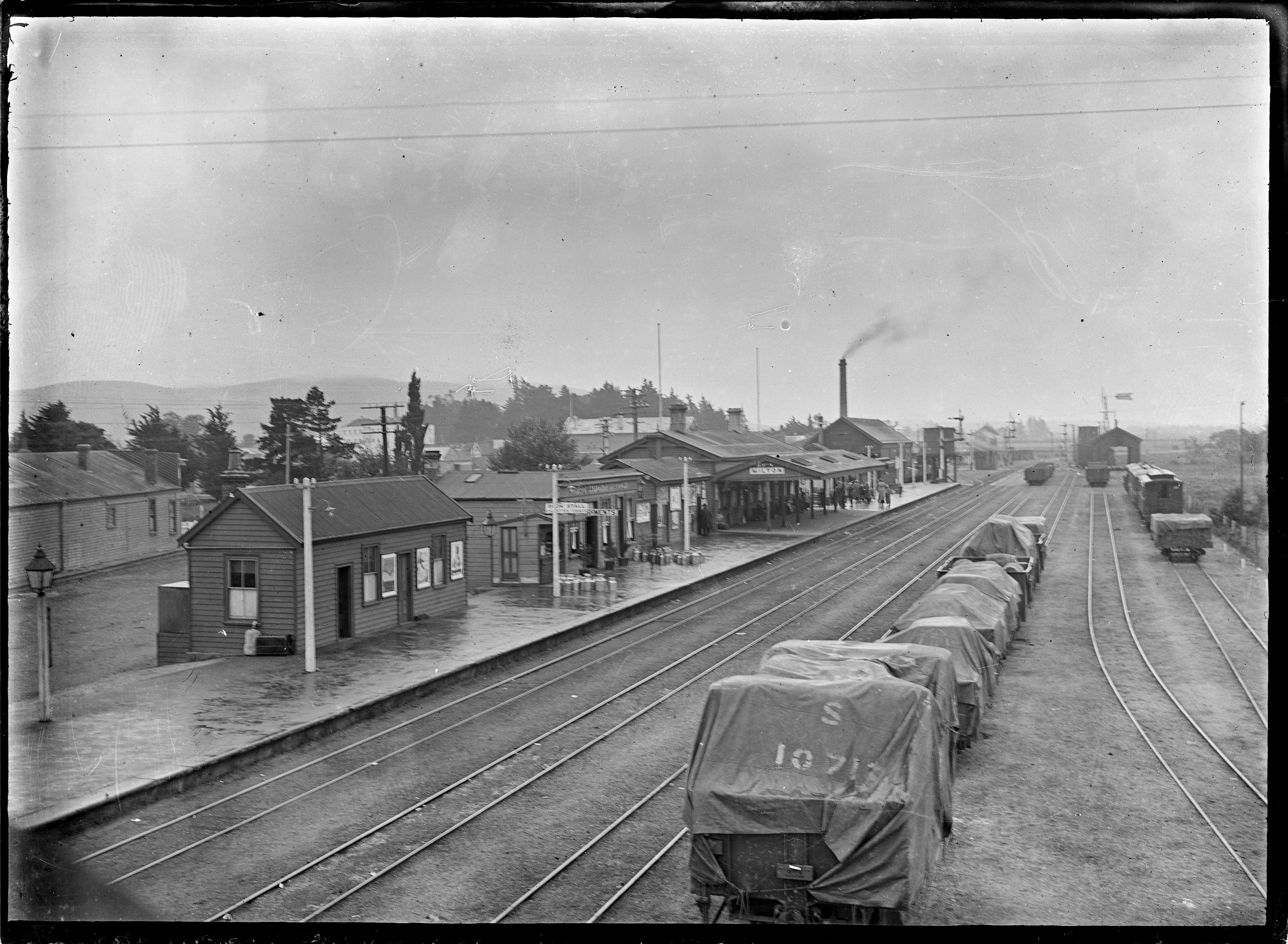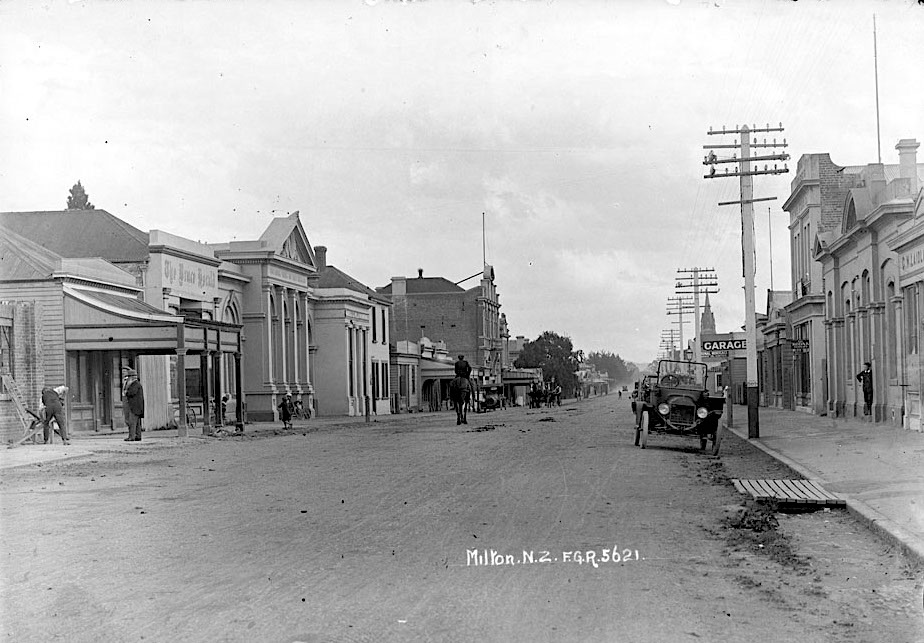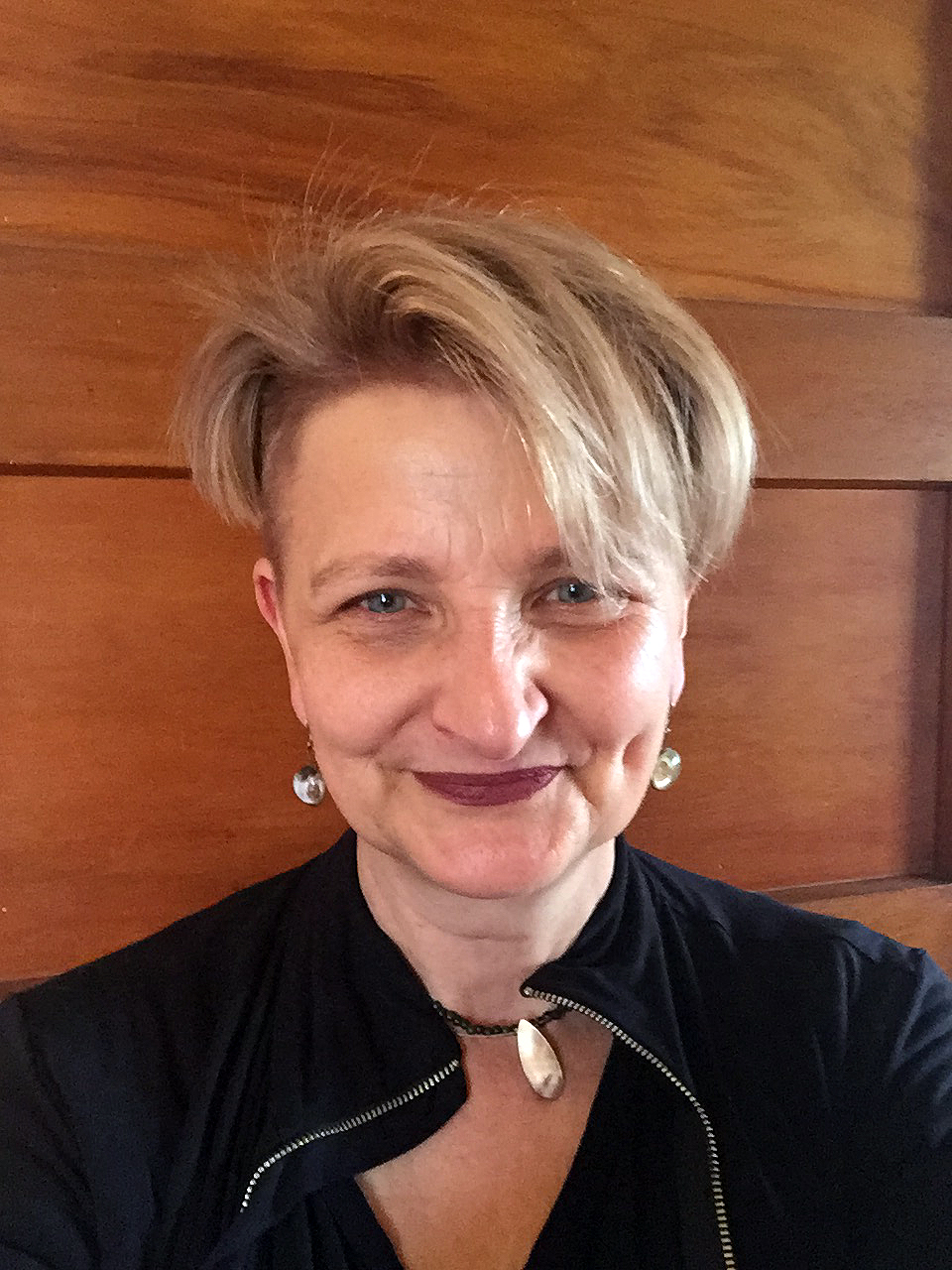|
Tokomairiro High School
Tokomairiro High School is a co-educational, state secondary school in Milton, New Zealand, Milton, New Zealand, often simply known as "Toko". History Founded in 1856 as Tokomairiro School, it is one of New Zealand's oldest schools. It was originally established at Fairfax (now Tokoiti) in the southeast of Milton, with Alexander Ayson as the first teacher. As Milton grew in size due to the Central Otago goldrush in the early 1860s, a larger school was soon needed. This was erected close to the centre of Milton in Spenser Street in 1863. In 1868, the Otago Provincial Government named Toko as one of the province's four grammar schools. By the late 1870s, the school had swollen in size from its original 24 pupils to over 300. A new building was needed, as the Spenser Street site had been made to accommodate only some 200 children. The new school, on the present site at the north end of Union Street, was opened in 1880. The current school buildings were added to this stone building d ... [...More Info...] [...Related Items...] OR: [Wikipedia] [Google] [Baidu] |
Milton, New Zealand
Milton, formerly known as Tokomairiro or Tokomairaro, is a town of over 2,000 people, located on State Highway 1, 50 kilometres to the south of Dunedin in Otago, New Zealand. It lies on the floodplain of the Tokomairaro River, one branch of which loops past the north and south ends of the town. This river gives its name to many local features, notably the town's only secondary school, Tokomairiro High School. Founded as a milling town in the 1850s, there has long been dispute as to the naming of the settlement. The town's streets are named for prominent British poets, and it is possible that the town's original intended name of Milltown became shortened by association with the poet of the same name. It is equally possible, however, that the name Milton inspired the choice of poets' names for the streets. History Milton's early history was strongly affected by the discovery of gold by Gabriel Read at Gabriel's Gully close to the nearby township of Lawrence. As Milton stood clo ... [...More Info...] [...Related Items...] OR: [Wikipedia] [Google] [Baidu] |
Central Otago Goldrush
The Otago Gold Rush (often called the Central Otago Gold Rush) was a gold rush that occurred during the 1860s in Central Otago, New Zealand. This was the country's biggest gold strike, and led to a rapid influx of foreign miners to the area – many of them veterans of other hunts for the precious metal in California and Victoria, Australia. The rush started at Gabriel's Gully but spread throughout much of Central Otago, leading to the rapid expansion and commercialisation of the new colonial settlement of Dunedin, which quickly grew to be New Zealand's largest city. Only a few years later, most of the smaller new settlements were deserted, and gold extraction became more long-term, industrialised-mechanical process. Background Previous gold finds in New Zealand Previously gold had been found in small quantities in the Coromandel Peninsula (by visiting whalers) and near Nelson in 1842. Commercial interests in Auckland offered a £500 prize for anyone who could find payable q ... [...More Info...] [...Related Items...] OR: [Wikipedia] [Google] [Baidu] |
Otago Provincial Government
The Otago Province was a province of New Zealand until the abolition of provincial government in 1876. The capital of the province was Dunedin. Southland Province split from Otago in 1861, but became part of the province again in 1870. Area and history Otago Province was one of the six original provinces established in New Zealand in 1853. It covered the lower third of the South Island. Its northern neighbour was the Canterbury Province, and the boundary was the Waitaki River from the Pacific Ocean to its source in the Southern Alps, and from there a straight line to Awarua Bay (now known as Big Bay) on the west coast. The inland area of the Waitaki catchment was unexplored in 1853 and dispute later arose over which branch of the Waitaki should form the boundary. The boundary was delineated in 1861 as following the Ohau River to Lake Ohau and from there a straight line to Mount Aspiring and Awarua Bay. Southland Province split from Otago in 1861, but became part of the pr ... [...More Info...] [...Related Items...] OR: [Wikipedia] [Google] [Baidu] |
Grammar School
A grammar school is one of several different types of school in the history of education in the United Kingdom and other English-speaking countries, originally a school teaching Latin, but more recently an academically oriented secondary school, differentiated in recent years from less academic secondary modern schools. The main difference is that a grammar school may select pupils based on academic achievement whereas a secondary modern may not. The original purpose of medieval grammar schools was the teaching of Latin. Over time the curriculum was broadened, first to include Ancient Greek, and later English and other European languages, natural sciences, mathematics, history, geography, art and other subjects. In the late Victorian era grammar schools were reorganised to provide secondary education throughout England and Wales; Scotland had developed a different system. Grammar schools of these types were also established in British territories overseas, where they have evolv ... [...More Info...] [...Related Items...] OR: [Wikipedia] [Google] [Baidu] |
Milton Primary School (New Zealand)
Milton, formerly known as Tokomairiro or Tokomairaro, is a town of over 2,000 people, located on State Highway 1, 50 kilometres to the south of Dunedin in Otago, New Zealand. It lies on the floodplain of the Tokomairaro River, one branch of which loops past the north and south ends of the town. This river gives its name to many local features, notably the town's only secondary school, Tokomairiro High School. Founded as a milling town in the 1850s, there has long been dispute as to the naming of the settlement. The town's streets are named for prominent British poets, and it is possible that the town's original intended name of Milltown became shortened by association with the poet of the same name. It is equally possible, however, that the name Milton inspired the choice of poets' names for the streets. History Milton's early history was strongly affected by the discovery of gold by Gabriel Read at Gabriel's Gully close to the nearby township of Lawrence. As Milton stood clos ... [...More Info...] [...Related Items...] OR: [Wikipedia] [Google] [Baidu] |
Leonard Cockayne
Leonard Cockayne (7 April 1855 – 8 July 1934) is regarded as New Zealand's greatest botanist and a founder of modern science in New Zealand. Biography He was born in Sheffield, England where he attended Wesley College. He travelled to Australia in 1877 and shortly moved on to New Zealand where he became established as a botanist. In June 1901, he attended the first conference of horticulturists in New Zealand at Dunedin where he presented a paper on the plants of the Chatham Islands and advocated the establishment of experimental plant research stations in New Zealand. This helped to establish Cockayne's reputation. Cockayne was a member of the 1907 Sub-Antarctic Islands Scientific Expedition. The main aim of the expedition was to extend the magnetic survey of New Zealand by investigating Auckland and Campbell Islands but botanical, biological and zoological surveys were also conducted. The voyage also resulted in rescue of the castaways of the shipwreck the '' Dundonald'' ... [...More Info...] [...Related Items...] OR: [Wikipedia] [Google] [Baidu] |
Forrestina Elizabeth Ross
Forrestina Elizabeth Ross (23 June 1860 – 29 March 1936) was a notable New Zealand teacher, mountaineer Mountaineering or alpinism, is a set of outdoor activities that involves ascending tall mountains. Mountaineering-related activities include traditional outdoor climbing, skiing, and traversing via ferratas. Indoor climbing, sport climbing, an ..., journalist and writer. She was born in Brixton, Surrey, England, in 1860. She was married to Malcolm Ross. The Forrest Ross Glacier was named after her. References 1860 births 1936 deaths New Zealand mountain climbers English emigrants to New Zealand New Zealand schoolteachers Female climbers 20th-century New Zealand writers 20th-century New Zealand women writers 19th-century New Zealand educators 20th-century New Zealand educators 19th-century New Zealand journalists 20th-century New Zealand journalists 19th-century women writers {{NewZealand-writer-stub ... [...More Info...] [...Related Items...] OR: [Wikipedia] [Google] [Baidu] |
Ken Bloxham
Kenneth Charles Bloxham (4 January 1954 – 10 October 2000) was a New Zealand rugby union footballer. Career Born and educated in Milton, Bloxham represented the local Tokomairiro club, and won a place in the provincial side from 1974 to 1986, playing as hooker. He captained Otago between 1980 and 1982. He briefly represented New Zealand in 1980 when he was called on as a replacement player during that year's tour of Fiji. He played in two matches, including the international against Fiji, but the game was not given full test status by the New Zealand Rugby Union. Bloxham died of cancer in Dunedin Dunedin ( ; mi, Ōtepoti) is the second-largest city in the South Island of New Zealand (after Christchurch), and the principal city of the Otago region. Its name comes from , the Scottish Gaelic name for Edinburgh, the capital of Scotland. Th ... on 10 October 2000. References 1954 births 2000 deaths People from Milton, New Zealand People educated at Tokomairiro Hi ... [...More Info...] [...Related Items...] OR: [Wikipedia] [Google] [Baidu] |
Hilary Halba
Hilary Halba (born ''ca'' 1962) is a New Zealand actor, theatre director and academic. She is the head of the performing arts programme at the University of Otago. Biography Halba was born in Milton and attended Tokomairiro High School before studying at the University of Otago. Halba studied acting and the teaching of acting at the Neighborhood Playhouse School of the Theater in New York City, and is an accredited teacher of the Meisner Technique. She was a founding member of theatre collectives Kilimogo Productions and Wow! Productions Trust. In 2010 she collaborated with Stuart Young to research and create a verbatim theatre production telling stories of domestic violence. Recognition Halba won Best Female Performer in the 2012 Dunedin Theatre Awards, and was named Dunedin's best actor of 2003 by the ''New Zealand Listener The ''New Zealand Listener'' is a weekly New Zealand magazine that covers the political, cultural and literary life of New Zealand by featuri ... [...More Info...] [...Related Items...] OR: [Wikipedia] [Google] [Baidu] |
Sam Hayes (news Reader)
Samantha Hayes (born 25 April 1984) is a South African-born New Zealand journalist and newsreader. Early life and personal life Hayes was born in Pietermaritzburg, South Africa to a New Zealand father and a South African mother. The family relocated to Milton, New Zealand, Milton in Otago, New Zealand when she was six months old. She has a sister and a brother. She received her education at Tokomairiro High School. She studied at the University of Otago and finished her degree, a Bachelor of Arts, Media & International Relations, at Victoria University of Wellington in 2007. Hayes has been a vegetarian since she was 11 years old for ethical reasons. She said: "I remember looking at new lambs on the farm and thinking I didn’t want to be responsible for them being killed". In December 2020, Hayes became engaged to Jay Blaauw, with whom she had her first child, Marlow. He was delivered by caesarean section in late 2019 after Hayes suffered pre-eclampsia. In March 2021, she anno ... [...More Info...] [...Related Items...] OR: [Wikipedia] [Google] [Baidu] |
The New Zealand Herald
''The New Zealand Herald'' is a daily newspaper published in Auckland, New Zealand, owned by New Zealand Media and Entertainment, and considered a newspaper of record for New Zealand. It has the largest newspaper circulation of all newspapers in New Zealand, peaking at over 200,000 copies in 2006, although circulation of the daily ''Herald'' had declined to 100,073 copies on average by September 2019. Its main circulation area is the Auckland region. It is also delivered to much of the upper North Island including Northland, Waikato and King Country. History ''The New Zealand Herald'' was founded by William Chisholm Wilson, and first published on 13 November 1863. Wilson had been a partner with John Williamson in the ''New Zealander'', but left to start a rival daily newspaper as he saw a business opportunity with Auckland's rapidly growing population. He had also split with Williamson because Wilson supported the war against the Māori (which the ''Herald'' termed "the ... [...More Info...] [...Related Items...] OR: [Wikipedia] [Google] [Baidu] |






